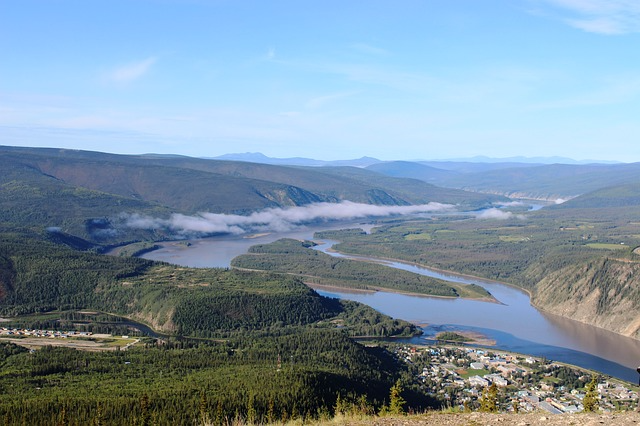
Jujiro Wada traveled from Seattle to Dawson in 1902 and along the route he passed through Skagway. In July he made it all the way from Dawson to Nome aboard the Yukon river steamer Rough Rider, where he took employment as a cook. The scenery he probably saw during his breaks is described below. For more details on Wada`s travel see Life History.
With its source in British Columbia, Canada, the Yukon River is a mighty river that flows through Yukon Territory, cuts horizontally through Alaska, and then discharges into the Bering Sea. Its total length spans some 3,700 km. Right at half -length of the Alaskan part, mountains of a modest height close in on the river beds, with the river at some parts measuring a mere 200 meter in width. Locals call this part Rapid Canyon.
Every year June to August this becomes a perfect spot for the king salmon and chum salmon, that come all the way up from Bering Sea. During the short summer season, fishing camps are set up at various places along the Yukon River, and along this Rapid Canyon in particular. The fishing camps are places where Athabaskan Indians and others who rely on salmon for their food in winter, come after leaving their villages, set up camps on the river beds, and sustain their lives by catching salmon. They set up camp each with their family, and live together with their family on the river bed.
Quite a few of these kind of camps are scattered along the Yukon. Each camp holds a number of facilities, for example a simple hut, which becomes the center of life, a place that serves as sort of a drying rack for drying the gutted salmon and a shack where the salmon is smoked. The hut that becomes the living quarters of course is the place to hide from rain, but also doubles as the bedroom, kitchen and dining room.